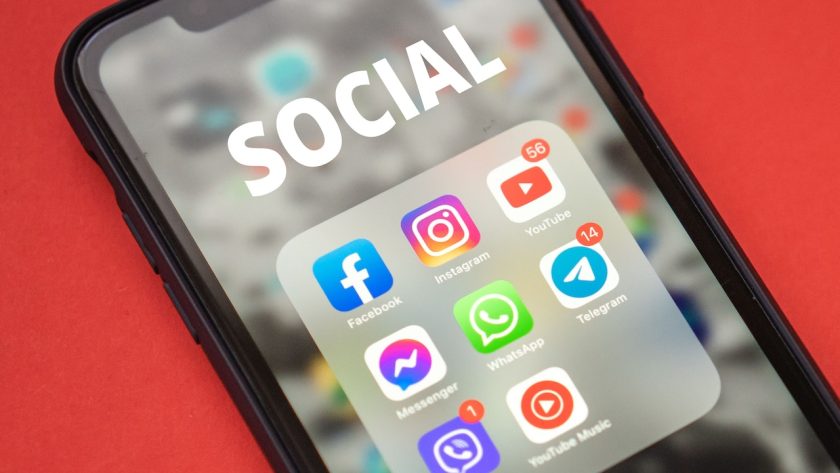Understanding the Importance of Digital Boundaries
Digital boundaries play a crucial role in our increasingly connected world. With the constant presence of smartphones, tablets, and computers, it is easy to get lost in the digital realm and lose sight of real-life interactions. Establishing clear boundaries around our digital usage helps us maintain a healthy balance between our online and offline lives.
One important aspect of setting digital boundaries is recognizing the impact excessive screen time can have on our well-being. Spending too much time staring at screens can lead to physical health issues such as eye strain, headaches, and disrupted sleep patterns. Moreover, excessive screen time has been linked to mental health problems like anxiety and depression. By understanding these risks, we are better equipped to make conscious choices about how much time we spend using digital devices.
Apple’s Screen Time feature provides a valuable tool for managing our digital boundaries. This feature allows users to monitor their device usage by providing detailed reports on app usage, notifications received, and even the number of times they pick up their phone throughout the day. By gaining insight into our habits through this data-driven approach, we can identify areas where we may be spending excessive amounts of time on certain apps or activities. Armed with this knowledge, we can then take steps towards creating healthier habits that align with our personal goals and priorities.
Exploring the Risks of Excessive Screen Time
Excessive screen time has become a concerning issue in today’s digital age. Spending long hours glued to electronic devices such as smartphones, tablets, and computers can have detrimental effects on both physical and mental health. One of the major risks associated with excessive screen time is sedentary behavior, leading to a more inactive lifestyle. This lack of physical activity can contribute to weight gain, obesity, and an increased risk of developing chronic conditions like heart disease and diabetes.
Moreover, excessive screen time has been linked to various psychological issues. Research suggests that spending too much time in front of screens can lead to poor sleep quality and insomnia due to the exposure to blue light emitted by these devices. Furthermore, excessive use of social media platforms may negatively impact self-esteem and mental well-being by promoting comparison with others’ curated lives or fostering cyberbullying.
Another significant risk is the potential negative impact on cognitive development in children and adolescents. Excessive screen time at a young age may hinder important developmental processes such as language acquisition, problem-solving skills, attention span, and emotional regulation. It is crucial for parents and caregivers to monitor their children’s screen usage carefully while encouraging alternative activities that promote healthy growth and development.
In this era where technology plays such a prominent role in our daily lives, it is essential that we recognize the risks associated with excessive screen time. By understanding these dangers – from sedentary behavior impacting physical health to psychological consequences like poor sleep quality or impaired cognitive development – individuals can take proactive steps towards establishing healthier digital habits for themselves and their loved ones.
Introducing Apple’s Screen Time Feature
Apple’s Screen Time feature is a powerful tool designed to help users manage their digital habits and promote a healthier relationship with technology. With the increasing prevalence of smartphones and other devices in our lives, it has become essential to set boundaries and limit excessive screen time. Apple recognized this need and introduced Screen Time as part of its iOS 12 update.
Screen Time provides users with detailed insights into their device usage, including the amount of time spent on different apps, websites, and categories such as social media or productivity. This information allows individuals to gain awareness about their digital habits and make informed decisions about how they allocate their time.
In addition to providing usage data, Screen Time also offers various features that can be customized according to individual preferences. Users have the option to set app limits for specific categories or apps, helping them establish healthy boundaries around certain activities. Furthermore, Screen Time allows users to schedule downtime during which only essential apps are accessible, promoting work-life balance and reducing distractions.
By introducing the Screen Time feature, Apple aims to empower its users with tools that enable them to take control of their digital well-being. It encourages individuals to be mindful of their screen time habits while offering practical solutions for managing it effectively. With this feature at hand, users can foster healthier relationships with technology by setting boundaries that align with their personal goals and priorities.
Navigating the Screen Time Settings on Your Apple Device
Navigating the Screen Time settings on your Apple device is a straightforward process that allows you to take control of your digital habits. To access these settings, simply go to the Settings app and tap on “Screen Time.” From there, you will be able to see an overview of your daily screen time usage and set limits for specific apps or categories.
Once you are in the Screen Time settings, you can explore various options to customize your experience. For instance, you can set up App Limits by tapping on “App Limits” and selecting the desired time limit for certain types of apps. This feature helps promote healthy digital habits by preventing excessive use of social media or gaming apps.
Additionally, managing Downtime is another useful aspect of Screen Time. By enabling this setting, you can specify a period during which only essential apps will be accessible on your device. This encourages work-life balance and reduces distractions during important tasks or designated relaxation periods.
By familiarizing yourself with the Screen Time settings on your Apple device, you gain valuable tools for managing and improving your digital well-being. Whether it’s setting app limits or scheduling downtime, these features empower you to take charge of how much time you spend using technology each day. So why not dive into these settings today and start fostering healthier digital habits?
Customizing App Limits to Foster Healthy Digital Habits
Customizing app limits is an effective way to promote healthy digital habits and maintain a balanced relationship with technology. By setting specific time restrictions on certain apps, individuals can regain control over their screen time and prevent excessive use. This feature allows users to prioritize their activities, ensuring that they allocate enough time for important tasks while still enjoying leisure activities.
To customize app limits on your Apple device, simply go to the Screen Time settings and select “App Limits.” From there, you can choose which categories or individual apps you want to set limits on. For example, if you find yourself spending too much time scrolling through social media platforms, you can set a limit of one hour per day for all social networking apps combined. Once the allotted time is reached, these apps will be temporarily disabled until the next day.
It’s worth noting that customizing app limits requires self-discipline and commitment. While it may be tempting to override the restrictions when faced with notifications or cravings for certain apps, staying true to your predetermined boundaries is crucial for fostering healthy digital habits. By consistently adhering to these limitations, individuals can gradually reduce their dependence on technology and create a healthier balance between online engagement and real-life experiences.
Managing Downtime to Encourage Work-Life Balance
One essential aspect of maintaining a healthy work-life balance is managing downtime effectively. Downtime refers to the time when you are not engaged in work-related activities and can focus on personal interests, hobbies, or spending quality time with loved ones. By setting aside dedicated periods for relaxation and recreation, you can recharge your energy levels and reduce stress.
To encourage work-life balance, it is crucial to establish boundaries around your downtime. This means consciously disconnecting from work-related tasks during these periods and prioritizing self-care activities instead. Avoid checking emails or responding to work messages during your designated downtime hours. Instead, engage in activities that bring you joy and help you unwind.
Another effective strategy for managing downtime is creating a routine or schedule that includes specific times for relaxation and leisure activities. By incorporating regular breaks throughout your day or week, you ensure that there is dedicated time for restorative activities. Whether it’s going for a walk in nature, reading a book, practicing mindfulness techniques, or pursuing a hobby – prioritize these moments as non-negotiable parts of your schedule.
By implementing these strategies to manage downtime effectively, individuals can promote their overall well-being by establishing a healthier work-life balance. Remember that taking care of yourself outside of work allows you to be more productive and focused when it’s time to return to professional responsibilities. Prioritizing self-care will ultimately contribute positively to both personal satisfaction and professional success without sacrificing one over the other.
Using Content & Privacy Restrictions to Protect Your Digital Well-being
One effective way to protect your digital well-being is by utilizing content and privacy restrictions on your devices. These settings allow you to control the types of content that can be accessed, as well as set limits on certain features and functions. By implementing these restrictions, you can create a safer and more balanced digital environment for yourself or your family.
To begin using content and privacy restrictions, navigate to the settings menu on your device. Look for the option labeled “Screen Time” or something similar. Within this section, you will find various options for managing app usage, limiting explicit content, controlling in-app purchases, and more. Take some time to explore these settings and customize them according to your preferences.
By setting up content and privacy restrictions, you can protect yourself from potentially harmful online experiences while still enjoying the benefits of technology. For example, you can block access to explicit websites or restrict certain apps from being downloaded or used during specific times of day. These measures not only promote a healthier digital lifestyle but also help safeguard against cyber threats such as malware or phishing attempts.
Remember that while content and privacy restrictions are useful tools in promoting digital well-being, they should be implemented alongside other strategies such as open communication about internet safety with children or practicing self-discipline when it comes to screen time management. By taking a proactive approach towards protecting your digital well-being through these various methods, you can ensure a healthier relationship with technology for yourself and those around you
Monitoring Screen Time Usage with Activity Reports
Activity reports are a valuable tool for monitoring screen time usage and gaining insight into digital habits. These reports provide detailed information on the amount of time spent on various apps and websites, as well as the frequency of device usage. By reviewing these reports regularly, individuals can better understand their own digital behaviors and make informed decisions about how to manage their screen time effectively.
One key benefit of activity reports is that they allow users to identify patterns and trends in their screen time habits. For example, someone may notice that they spend an excessive amount of time on social media during certain hours of the day or consistently use a particular app before bedtime. Armed with this knowledge, individuals can take proactive steps to set boundaries or establish healthier routines around their device usage.
Additionally, activity reports can be particularly useful for parents who want to monitor and guide their children’s screen time activities. By reviewing these reports together with their children, parents can initiate conversations about responsible technology use and help them develop healthy digital habits from an early age. This open dialogue fosters understanding between parents and children while promoting mindful engagement with screens.
In summary, activity reports serve as a powerful tool for tracking screen time usage and gaining insights into digital behaviors. Whether used by individuals themselves or in a family setting, these reports enable users to identify patterns in device usage and make informed decisions about managing screen time effectively. By leveraging the information provided by activity reports, individuals can foster healthier relationships with technology while maintaining balance in all aspects of life.
Establishing Effective Communication around Screen Time Boundaries
Communication is key when it comes to establishing effective screen time boundaries. It’s important to have open and honest conversations with your family members or roommates about the amount of time spent on screens and the impact it can have on overall well-being. Start by setting aside dedicated time to discuss this topic, ensuring that everyone has a chance to voice their concerns and opinions.
During these discussions, actively listen to each other without judgment. Encourage everyone involved to share their thoughts, feelings, and experiences regarding screen time usage. This will help create an atmosphere of understanding and empathy, allowing for productive dialogue rather than confrontational arguments. Remember that effective communication involves both speaking your own truth and genuinely considering others’ perspectives.
To ensure ongoing communication around screen time boundaries, establish regular check-ins as a way to monitor progress and address any issues that may arise. These check-ins can be weekly or monthly meetings where you discuss how well everyone is adhering to the agreed-upon limits and whether any adjustments need to be made. By maintaining open lines of communication in this way, you can foster accountability within the household while also demonstrating respect for each individual’s needs and preferences
Implementing Strategies for Successful Screen Time Management
One effective strategy for successful screen time management is setting clear boundaries and expectations. This involves establishing specific rules around when and how screens can be used, such as designating certain times of the day as “screen-free” or implementing a maximum daily screen time limit. By clearly communicating these boundaries to yourself or your family members, it becomes easier to adhere to them and maintain a healthy balance between technology use and other activities.
Another important strategy is practicing self-discipline and being mindful of your screen time habits. It can be easy to get caught up in endless scrolling or binge-watching sessions without realizing how much time has passed. By consciously monitoring your own behavior and making an effort to reduce unnecessary screen usage, you can regain control over your digital habits. This may involve setting specific goals or using productivity apps that track your screen time and provide reminders when you’ve exceeded certain limits.
Additionally, finding alternative activities that are engaging and fulfilling can help minimize excessive screen time. Engaging in hobbies, spending quality time with loved ones, exercising, reading books, or pursuing creative outlets are just a few examples of activities that can divert attention away from screens. By actively seeking out these alternatives, you not only reduce the amount of time spent on screens but also enhance overall well-being by diversifying experiences beyond the digital realm.
What is screen time management?
Screen time management refers to the practice of consciously regulating and limiting the amount of time spent on electronic devices, such as smartphones, tablets, and computers, in order to promote a healthy balance between technology use and other activities.
Why is understanding digital boundaries important?
Understanding digital boundaries is important because it helps individuals establish healthy limits on their screen time, ensuring that they allocate enough time for activities like physical exercise, social interactions, and face-to-face communication.
What are the risks of excessive screen time?
Excessive screen time can lead to various risks, including sedentary behavior, physical health issues, mental health problems such as anxiety and depression, sleep disturbances, decreased academic or work performance, and impaired social skills.
What is Apple’s Screen Time feature?
Apple’s Screen Time feature is a tool available on Apple devices that allows users to monitor and manage their screen time. It provides insights into app and device usage, offers features to set limits on app usage, and enables users to customize settings to promote healthy digital habits.
How can I navigate the Screen Time settings on my Apple device?
To navigate the Screen Time settings on your Apple device, go to Settings, tap on Screen Time, and explore the various options available to customize your screen time management, including App Limits, Downtime, Content & Privacy Restrictions, and more.
How can I customize app limits to foster healthy digital habits?
To customize app limits on your Apple device, go to Screen Time settings, tap on App Limits, select the app categories or specific apps you want to limit, set the desired time limits, and your device will notify you when you approach or exceed the set limit.
How can downtime help encourage work-life balance?
Downtime, a feature in Apple’s Screen Time settings, allows you to schedule a specific period during which only essential apps are accessible on your device. By using downtime, you can create boundaries and allocate uninterrupted time for family, hobbies, relaxation, and work-life balance.
How can content and privacy restrictions protect my digital well-being?
Content and privacy restrictions in Apple’s Screen Time settings allow you to customize the level of access and control over certain features, apps, and content on your device. This helps protect your digital well-being by filtering inappropriate content, limiting app installations, and enhancing privacy.
How can I monitor my screen time usage with activity reports?
Apple’s Screen Time feature provides activity reports that show detailed insights into your app and device usage. You can access these reports in the Screen Time settings, allowing you to monitor your screen time patterns, set goals, and make informed decisions about managing your digital habits.
How can I establish effective communication around screen time boundaries?
To establish effective communication around screen time boundaries, it’s important to have open conversations with family members, friends, or colleagues about the importance of managing screen time. Discuss the potential risks, set mutually agreed-upon limits, and support each other in adhering to these boundaries.
What are some strategies for successful screen time management?
Strategies for successful screen time management include setting specific goals, using productivity apps or features, practicing digital detoxes, engaging in offline activities, creating a schedule or routine, seeking support from others, and being mindful of your screen time habits.




